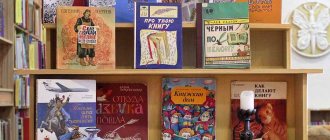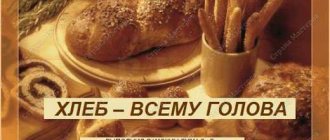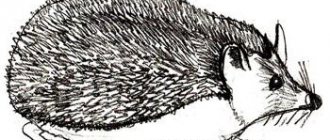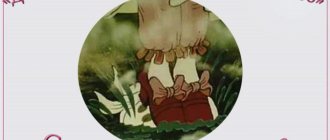Type of project: informational and creative
Goal: Expanding children's knowledge about bread.
Tasks:
- Build children's knowledge:
- about the process of growing bread (who grows it, and people, what professions help grain growers; what tools and machines are used in growing and harvesting cereals, their processing);
— about the process of making bread and bakery products.
- Give an idea of how bread was grown in the old days.
- Develop the ability to name the sequence of growing bread - plowing, harrowing, sowing, growing, reaping, threshing, baking.
- Cultivate a caring attitude towards bread and respect for the people who raised it.
Final event - exhibition of children's creativity
Organization of project activities:
- Discussing the problem situation and drawing up an action plan.
A bunch of ears of wheat and rye is added to the group. The children look at them. The teacher asks the children:
— do they know what it is?
- Do they know how they appeared on Earth and what they are needed for?
Children are invited to listen to a fairy tale about...
The teacher invites the children to go on a journey in which they will learn where bread comes from.
- Practical activities to implement the project.
2.1. Cognitive - research activities.
Children's knowledge about cereals is updated. To this end:
- looking at the illustrations:
- ears and grains of wheat, rye and oats, their comparison (similarities and differences);
— reproductions of I. Shishkin’s painting “Rye” (conversation on content);
- “Sowing”, “Growth” - goal: to give children an idea of \u200b\u200bsowing bread. Introduce the tools that were used in the old days and are now used for this work - a seeder. To consolidate children's knowledge about the conditions necessary for the growth and development of plants (ear of grain)
-What does a grain grower do?
— What does it take for the spikelets to grow strong and strong?
— pictures, photos depicting agricultural machinery.
— Looking at paintings
Purpose: To give children an idea of grain processing - grinding, that depending on the grain, different flours are obtained (rye, wheat). Introduce the tools that were used in the old days and are now used for this work - mortar, pestle, millstone, windmill, electric mill. To form an idea of the process of baking bread (kneading dough, ingredients, flour products).
— Examination of illustrations “ Harvest”, “Threshing grain”
Purpose: To give children an idea of the grain harvest. Introduce the tools that were used in the old days and are now used for this work - sickle, scythe, flail, sheaf, combine, elevator; with professions - combine operator, grain grower.
2.2. Communication activities.
- Conversations are held:
- “Where did the bread come from on the table”;
- Descriptive stories about cereals are compiled:
- "Guessing riddles about bread"
Goal: To develop the ability to listen attentively to the content of the riddle, identify signs and actions characteristic of the riddled object, compare them, select objects and phenomena that correspond to all points of the description.
- Learn by heart:
— tongue twisters “Peter the Baker baked pies in the oven”
- Finger gymnastics is performed:
— “Baker” - development of fine motor skills of the hands.
Sl./i “Who can name more bakery products”
Sl/i “Finish the sentence”
Purpose: To practice using complex sentences.
example: · Mom put the bread... where? (into the bread bin), Ears of corn grow...where? (to the field), The combine went to the field to... (harvest the grain), The grain was taken to the mill to... (grind flour), The cook kneaded the dough to... (bake bread), etc.
S/i “Proverbs about bread”
Goal: Encourage children to be interested in the meaning of words and enrich their vocabulary.
- Articulation gymnastics “The dough rises”
Goal: To develop cognitive interest and memory. Enrich your vocabulary.
exercise for cheeks and lips: 1) you need to pull in your cheeks; 2) you need to inflate your cheeks, and then inflate them one by one.
2.3. Reading fiction:
Exhibit books on the topic at the artistic and speech center.
- Yu. Zhdanovskaya “Niva”;
- “The legend of how a delicious cupcake appeared or the tale of a magic grain,”
goal: To develop the ability to listen carefully and interestedly to a work of art.
- work by V. Krupin “Today’s Bread”
Goal: to encourage people to talk about their attitude to a specific act of a literary character.
- work “Spikelet” (Ukrainian folk tale)
Goal: to continue to develop an interest in fiction.
2.4. Game activity.
Did. games:
"Lotto. Bakery products",
“Cut pictures. Bakery products",
"What's extra?"
“Name the profession and actions” (a plowman plows the land, a combine operator, an agronomist, a tractor driver...);
“Arrange the pancakes” goal: To develop the perception of shape, size, to train children in the ability to visually determine sizes in ascending (descending) order, to develop the eye, visual perception.
"What's first, what's next"
Goal: To consolidate the sequence of actions in the process of growing bread, to develop the ability to understand cause and effect relationships.
“What flour was baked from?”
Goal: To consolidate children's knowledge about cereals, types of flour, and bakery products that are made from them.
"Name your profession"
Goal: To expand children’s understanding of the professions of people involved in growing and producing bread, and to expand their vocabulary.
“What does it take to be a grain grower?” (application.)
Goal: To consolidate children’s knowledge of agricultural machinery, farmer’s tools, to develop visual perception, attention, and memory.
2.5. Labor activity.
Experiments with earth
Goal: To form ideas about the properties of solid and loose soil. To consolidate the knowledge that it is impossible to plant grain in solid ground 1) examining the soil - what is the difference, in which box is which 2) planting an imaginary grain - digging a hole with your fingers, a stick 3) watering the soil - in which box the grain will be saturated with water faster.
2.6. Productive activity.
“Wonderful bag for bread” (NGO “Hud. Creativity”, manual labor)
L.V. Kutsakova “Design and artistic work in kindergarten p. 106, No. 29
2.7. Physical activity.
P/game: “Find your gingerbread.”
Goal: Continue to develop children’s motor activity, attentiveness, reaction speed, and ability to navigate in space. P/game "Spikelet"
Goal: To promote the development of coordination of movements, orientation in space, develop dexterity, speed
P\ game "Loaf"
Goal: to develop the ability to independently organize outdoor games with peers, combine movements, showing creativity.
2.8. Musical and artistic activities.
Audio recording of the song “My Russia” by G. Struve, “Russian Field” by J. Frenkel
NOD “Where the bread came to us from” for children of senior preschool age
Lesson summary “Where did bread come to us from?”
older age
Program content:
Give children the idea that bread is a daily product. Tell where bread comes from, how it is made, who grows it and bakes it. Cultivate respect for the work of adults and respect for bread.
Equipment
: pictures, plate with flour.
Dictionary enrichment:
stale, aromatic, appetizing, bakery
Progress of the lesson
What did you guys have for breakfast today? (Milk porridge, bun, tea) And yesterday? (Omelet, bread with butter, coffee) What was for lunch? (Borscht, vermicelli with cutlet, juice, bread) Guys, the menu changes all the time, but what product is always on the table both morning and evening? That’s right, every day we have bread on the table in kindergarten and at home. Guys, do you like bread? What kind of bread do you like? (White, raisin rolls, soft). Let's think about it and name a lot of words, what kind of bread is it? (Tasty, soft, stale, white, hot, fresh, aromatic, appetizing) Bread can be different, but it is always tasty and healthy. Guys, who knows where the bread came to us from? (Mom bought it in the store) Would you like me to tell you how it got into the store? First, a grain of bread is planted in the ground. Special machines, seeders. Then these ears of corn grow. The grains are collected by machines and taken to the mill. There the grains are ground into flour. Look, I have flour in my plate. Try it with your hands. What does it feel like? (soft, crumbly). From this flour, bread and rolls are baked at the bakery (factory where bread is baked).
Physical education minute:
The wind is blowing from above. Herbs and flowers bend. Right-left, left-right. Flowers and grass are bowing. (Tilts to the sides). Now let's get together. Let's all jump in place (jumping) Higher, more fun, like that! We all move to a step (walking in place) So the game is over. It's time for us to get busy. Guys, how many of you have seen how your mother makes dough at home? (Flour, water) Look at what ingredients are needed
Let's name them. (Children's answers). When the dough is kneaded, it is placed in a mold and placed in the oven. When the bread is ready, it is loaded into cars and taken to the store. Guys, what else is baked from flour? Children's answers (rolls, loaves, pies, cakes). Well done! There are pieces of bread on the plate. Take each one and try it.
Signs: It was not allowed for one person to finish eating bread after another - you would take away his happiness and strength. You can’t eat behind another person’s back—you’ll also eat his power. If you give bread from the table to dogs during a meal, poverty will befall you. With a young and aging month, it was impossible to start sowing: “It is good to sow when the month is full!” Although bread sown on the new moon grows and ripens quickly, the ear will not be rich in grain. And vice versa: “full moon bread” grows quietly and has a short stem, but is abundant in full-fledged grain. If the sun has set, “don’t start a new war,” otherwise the bread will not be good, and the entire economy may fall into disrepair. Well, if you really needed to cut off some bread, then you didn’t eat the crust, but after cutting off as much as you needed, you put the crust on the rug. It was considered the greatest sin in Rus' to drop at least one crumb of bread, and an even greater sin was to trample this crumb underfoot. People who break bread become friends for life. When taking bread and salt on a towel, you should kiss the bread.




